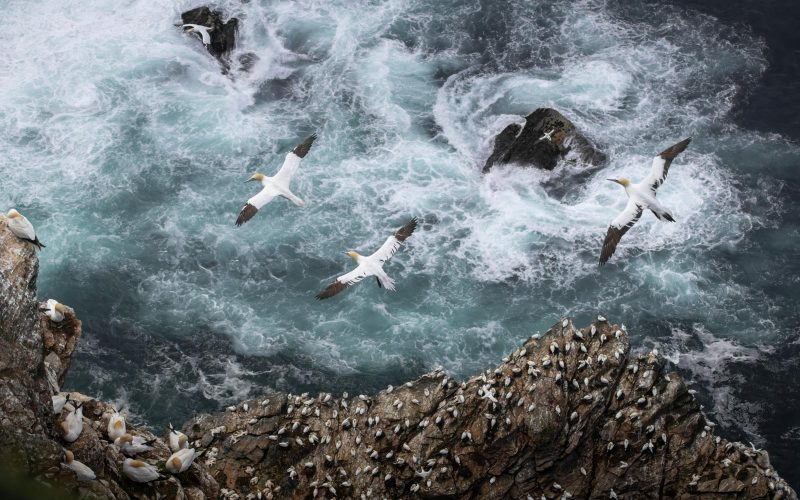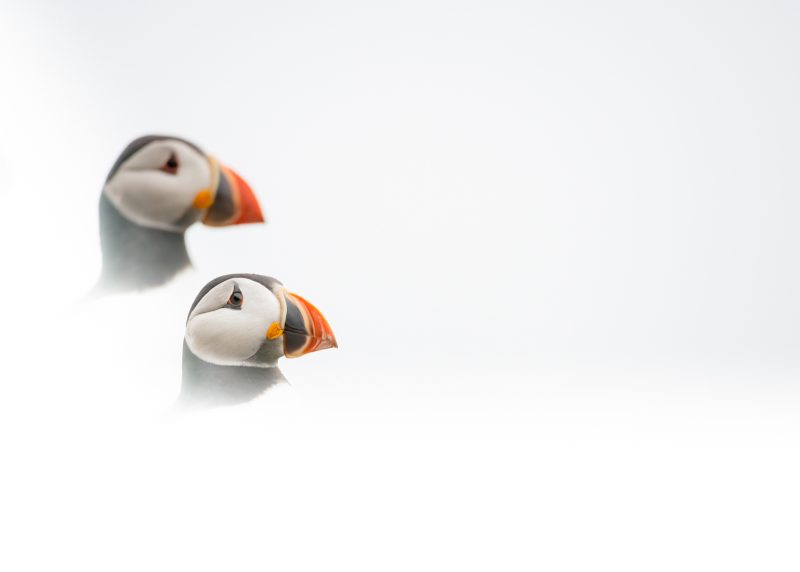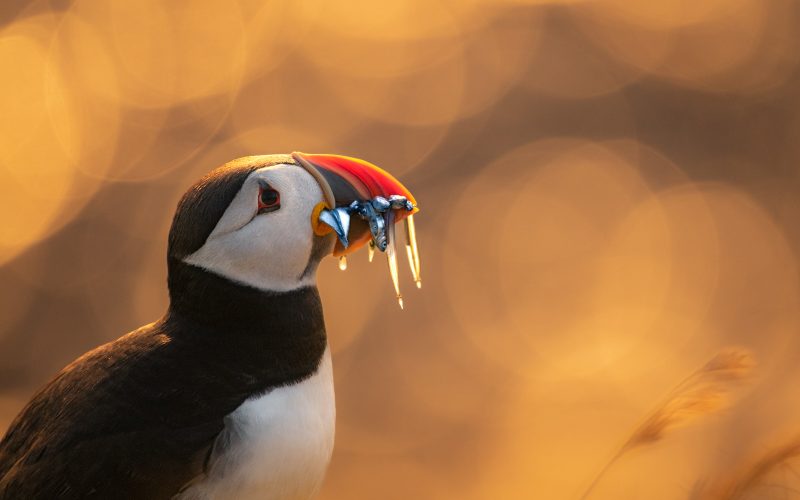Rachel Bigsby: A Life-Changing Encounter Through the Lens

Rachel Bigsby is a UK-based wildlife photographer and bird enthusiast. Her portfolio includes award-winning and widely published images, and her passion for birdlife is clearly communicated through her intimate fine-art portraits.
Rachel has been carving an impressive career in wildlife photography, but she isn’t just making waves in this space. Rachel has also filmed long-lens wildlife for BBC Earth, Springwatch, and Countryfile, to name a few.


With a speciality in bird photography, Rachel uses her work and her platforms to raise awareness of the plight of seabirds and wildlife, and we’re excited to catch up with her in this interview.
We love your body of work, and it’s been great to watch you grow as an up-and-coming woman in photography. Was there a major turning point in your career that encouraged you to keep pursuing your photography?
Over the last five years, several opportunities have acted as stepping stones for my morale.
During my late teens, this was having my photography regularly featured on the local news and social media sites.
As my career progressed, the opportunities gained momentum and became slightly more notable including my first major competition win, followed by a feature on BBC Springwatch, working alongside Simon King and most recently becoming a Nikon Creator.
I will always feel immensely grateful for the exposure that each opportunity provided me, but above all, what mattered most to me was the recognition for my hard work and the reassurance that my photography was ‘good enough’.
You are known for your captivating images of seabirds – what inspired you to focus your work on them?
I’ve always been mesmerised by the sea, and my captivation was very much influenced and inherited by my late grandfather who was a keen naturalist and fisherman.
In a recurring childhood dream, I saw a tempestuous, deep blue sea with waves that crashed onto big, dark rocks and birds with immense wingspans that glided so gracefully over the raging waves.
In my mid-teens, I began to express my love of the ocean through the creative mediums of paint and photography.
My work focussed heavily on seascapes until one day, an unfamiliar bird caught my eye. The bird was a Northern Fulmar, or ‘Albatross of the North’, and from that day on, the enchantment began.
I’m often asked what it is about seabirds that captures me so intensely, and I’ve always struggled to find the words. Perhaps there are no words to describe such a powerful, deep-rooted connection.
However, in an attempt to answer your question, all I can say is that observing a seabird through my lens feels like having a secret portal into another world.
To me, seabirds represent freedom, courage, grace and resilience, and each species has a story, folklore, physical attribute or iconic call which has over time become the foundation of every daydream and every dream shot.
You’ve worked as a camera operator for BBC Earth and BBC Springwatch (to name a few) – is there a difference in your thought process and workflow when filming vs when photographing?
I haven’t noticed a significant difference between filming and photographing as in both cases, it is subject behaviour and beautiful composition that I am looking to capture.
However, I do find wildlife filmmaking more creatively restrictive than wildlife photography as it eliminates the opportunity for artistic interpretation and experimentation with shutter speed and exposure.
Having said that, there are a handful of species that I have worked with that I believe are more effectively captured on film rather than photographs.
For example, the playful nature of inquisitive fox cubs and the balletic flight of a barn owl as it quarters a field at dusk.
I additionally find that filming also presents a wonderful opportunity to tell a story more easily than an image can.
How do you come up with new ideas and compositions to capture birdlife that is widely photographed, like the puffin?
I like to photograph with purpose and approach my photography by finding the composition first.
Once I am happy with the composition, I wait patiently for the subject to enter my frame.
The success rate of my method is not particularly high, but I personally find that the satisfaction of one beautifully composed photograph is much greater than an image that lacks a strong composition.
For this reason, I feel confident to take risks and hope that the images I take of popular species will gain a unique quality from doing so.
Of course, this isn’t always practical or possible and under time-sensitive or pressured conditions, I have to adapt my method.
I find myself seeking alternative compositions in areas of the subject that are often overlooked, such as exquisite details in the feathers, pellage, beak or other distinguishing features.
In 2022, you documented the avian flu crisis that had devastating impacts on seabird colonies of the Shetland Isles (and beyond). What role do you feel images like these play in today’s world?
My first experience with Avian Influenza was on the shores of Scotland before the disease was recognised and the impending impact understood.
For reasons I can’t explain, I felt compelled to document what I was witnessing.
This decision caused a mighty internal battle as to whether taking images of suffering and deceased animals was appropriate and if I was doing the ‘right thing’.
I concluded that even if the photograph’s content did not align with my ethics at the time, all that mattered was that I tried to show the world what was happening.
I’ve since felt very passionately about the importance of documentary photography and it has unexpectedly become a genre that I would like to explore further.
I believe that we all have a responsibility to be socially and environmentally aware, which photography has the potential to do.
Images like those which I have taken have the power to connect with a global audience by depicting beauty and vulnerability, and creatively communicating catastrophes, stories, and species that illustrate the irreplaceable value of our natural world.
It is my hope that my images will empower change in how we treat our planet, encourage funding to support the recovery of precious seabird colonies, and spark conversations among communities.
Another species you photographed in depth is badgers. You have spent over four years photographing a clan in the countryside. How did you first come to ‘meet’ these badgers? And what keeps you going back?
Badgers have a very special place in my heart, and for as long as I can remember, I’ve wished to photograph them.
Due to their sensitive nature and the laws that protect badgers, finding a location is often always down to field skills and hard work.
It was years of trial and error at a number of different setts until I found the holy grail, thanks to the kindness of strangers who have since become my closest friends.
The badger sett has everything that a photographer could wish for. Beautiful light, bountiful badgers that emerge during daylight hours, and bluebells!
I try not to anthropomorphise, but over the last four years, I have built a bond with the clan and can recognise each individual.
Most importantly, I have developed trust and I understand their limits. I practise responsible photography, prioritising the badger’s welfare at all times.
Each moment I spend with the clan is precious to me, and I never take it for granted.
With the expansion of the horrific badger cull, the increase of poorly planned roads that displace badgers, the increasing number of vehicles on the road, and the ongoing crime and persecution, you never know which moment could be the last.
You’ve mastered the use of high-key in your wildlife photography. How did your photography style develop?
When I began to develop a signature, it was very different to what you often see now. My work was underexposed, backlit, and exaggerated golden light.
However, working predominantly with seabirds on remote islands presents many challenges, such as trips that are governed by time, tide, and weather, which is more often than not, dreich!
During my seabird season of 2022, many of my trips coincided with bad bouts of weather, therefore it was imperative that I adapted and worked with the weather conditions.
As a result, my signature high-key style was born using mist, fog, and cloud to my advantage to create stunning simplicity.
As a judge for the RSPCA’s ‘Young Photographer Award’, what key elements do you look for in a stand-out image?
I’m drawn to images that tell a story or convey an emotion, but most importantly, I like to see originality, and I want to see that the photographer has considered how to process their image for maximum effect.
Most importantly, I want to see that the welfare of the subject has been prioritised and doesn’t show signs of distress, such as the subject moving/flying away from the camera or displaying defensive behaviours.
A popular example that I would automatically dismiss is the much sought-after image of an Arctic Tern attacking the camera as it fiercely defends its precious nest.
If you had to choose one image from your wildlife photography, which do you feel has had the most impact and why?
I think that my Avian Influenza series is perhaps the most impactful due to the raw nature of the images.
However, I also think that my high-key Razorbill series of images is equally as impactful in terms of their originality and beauty!
When packing for a photography expedition, what is one piece of gear you could not go without?
Having used Nikon equipment throughout my entire career, I was certain that nothing could compete with the D850 model.
That was until I got my hands on the mirrorless Z9!
The animal eye detection and tracking takes the “still” out of “still photography” and has become a feature that I would now hate to go without, as it enables me to achieve a higher success rate with fast-moving birds, creating images that were once out of reach.
Suncream is also VERY important!
What is the most exciting photography project you have been on?
I get so much joy from visiting the UK’s seabird colonies, so visiting Shetland thanks to the generosity of Brydon Thomason and the team at Shetland Nature fulfilled a dream that I had for a very long time.
I was able to photograph a huge variety of new seabirds and at long last, visit the breathtaking Hermaness National Nature Reserve.
I have also felt very privileged to assist industry legend, Simon King, on location for Wild Isles!
As a public speaker and advocate for women in photography, what advice would you give to young women out there who want to break into photography and overcome the hurdles that are often faced by women in the industry?
First and foremost, it is so important to believe in your skill, your capabilities, and your potential. Let this be fuelled by your passion, and above all, try your hardest to remain positive when facing inevitable challenges.
Secondly, I cannot stress the value of making connections and building friendships with those in the industry enough. When I began, I looked up to people like wildlife filmmaker, Erin Ranney, who once said to me, “lift as you climb”.
The saying is most certainly true in my experience, and I owe immense gratitude to Erin and a handful of individuals and brands within the industry who have dedicated their time, knowledge, and support to me.
Thirdly, try not to feel discouraged from trying because you might feel intimidated.
In my experience, the industry is a very welcoming and friendly place with plenty of opportunities to share.
I have found that many notable brands are proud to represent female photographers, and I am pleased to say that I haven’t personally experienced any significant hurdles as a result of my gender.
To finish, in 2018, BBC Wildlife Film producer, Giles Badger, said to me: “Passion is never misplaced, but you must enjoy the journey. If you’re enjoying the journey, it never feels like a chore.
“Someone once said to me that they had spent all of their energy racing to the top of the career hill, and when they submitted, there was nothing there. Enjoy the ride, don’t rush, be kind to yourself and remember that the only thing that matters in life is inner happiness”.
We can’t wait to see more of your work – can you give us a clue as to what you are working on next
Over the next 12 months, I will travel to both the Arctic and Antarctic, and enjoy another summer immersed in the UK’s finest seabird colonies!



























